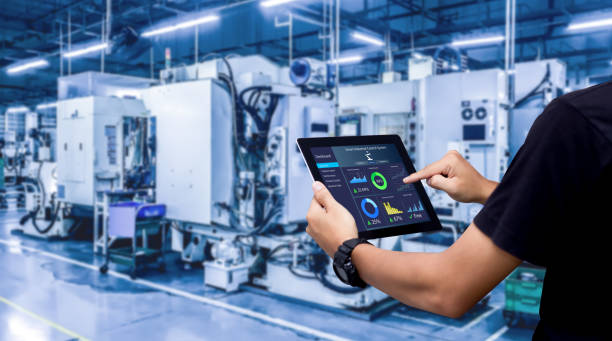Striving for Industrial Excellence: The Emergence of Smart Factories
In the rapidly evolving world of business and industry, smart factories stand out as a promising development. These are dynamic systems where machinery and equipment can improve processes through automation and self-optimization. The benefits also extend beyond merely physical production, impacting functions like planning, supply chain logistics, and even product development.

Decoding the Smart Factory Concept
At the core of the smart factory is the concept of the Internet of Things (IoT). However, it is not just about the interconnectivity of machines, but also their ability to perceive their environment and make decisions. This paradigm shift in manufacturing and production is a result of several technological advancements like data analytics, machine learning, and interconnected sensors.
The Present Scenario: Current Trends and Insights
While the smart factory concept may seem futuristic, many businesses are already reaping its benefits. There’s a growing trend of industries adopting this model to increase efficiency, reduce waste, and improve product quality. According to a study by Capgemini, smart factories could add as much as $1.5 trillion to the global economy in the next five years.
The Implications of Smart Factories: Impact and Challenges
Adopting the smart factory model comes with its share of challenges. Businesses need to invest heavily in the right technology and infrastructure. There’s also the task of training the workforce to handle this new mode of operation. However, the benefits are manifold. Smart factories provide businesses with an unparalleled opportunity to optimize production, increase efficiency, and reduce operational costs.
Backing it Up: The Evidence
Studies have shown that smart factories can reduce downtime by 50% and increase production speed by 20%. They also offer better quality control, leading to a significant reduction in defects. Apart from these tangible benefits, they also provide a treasure trove of data that can be used to make informed business decisions.
Implementing Smart Factory: Key Strategies
- Begin with a clear objective: Know what you want to achieve with the smart factory model. Be it reducing waste, increasing efficiency, or improving product quality, having a clear goal will guide your implementation strategy.
- Invest in the right technology: This goes beyond just purchasing the latest machines. It involves creating an ecosystem where data can be captured, processed, and acted upon.
- Train your staff: The shift to a smart factory is not just a technological one, but also a cultural one. Make sure your staff is adequately trained and ready to embrace this change.
- Plan for the long term: The shift to a smart factory is not an overnight process. It requires long-term planning and continuous investment.
Wrapping Up: The Future is Smart
Smart factories represent a significant shift in how businesses operate, offering a chance to increase efficiency, reduce costs, and improve product quality. While the initial investment might be considerable, the long-term benefits make it a worthy consideration for businesses looking to stay competitive in a rapidly evolving industry landscape. Today, the question isn’t whether businesses will transition to smart factories, but rather how quickly they can do so. As we look to the future, one thing is clear: the future of manufacturing is smart.




